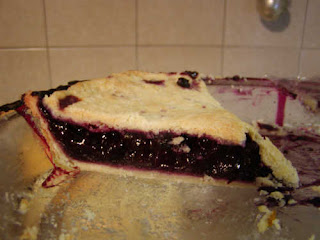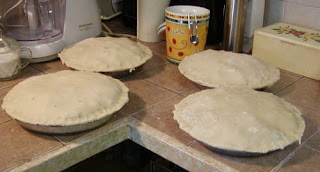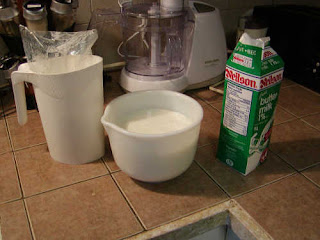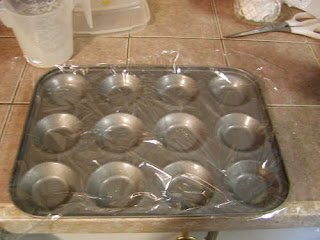
I like to experiement in the garden. Growing unusual, often old and forgotten, plants is a joy. I never plant those ordinary annual flowers people seem to buy in flats and stick in their gardens and I like to grow heirloom vegetables, who's seed I can save to grow from year to year. This saves me a lot of money in seed each spring.

One of the things I have discovered this spring are chichiquelites, also known as garden huckleberries (solanum nigrum). I got these seeds in a trade and, having never heard of them previously I did some research.

I am always looking for good to eat and easy to grow quickly, fruits for wine and pie making. These sounded perfect! They also make good jam, but we don't eat a lot of jam so I will be using them for pies and wine.
They need more sweetening than blueberries, but I am ok with that. I will add a bit more sugar to the pies.
 They are easy to grow from seed, not requiring stratification. I know this because I have some seedlings sprouted on my seed windowsill. I have heard from other growers that they grow quickly, without a lot of care, into huge shrubs covered with berries. This is what I am hoping for. I will can and/or freeze all that I can get, if we like them. I will also collect more seeds to grow again next year. They will apparently reseed themselves anyway but I prefer to plant them from seed myself. Being a close relative of the poisonous nightshade berry, I would prefer to know exactly where they are growing.
They are easy to grow from seed, not requiring stratification. I know this because I have some seedlings sprouted on my seed windowsill. I have heard from other growers that they grow quickly, without a lot of care, into huge shrubs covered with berries. This is what I am hoping for. I will can and/or freeze all that I can get, if we like them. I will also collect more seeds to grow again next year. They will apparently reseed themselves anyway but I prefer to plant them from seed myself. Being a close relative of the poisonous nightshade berry, I would prefer to know exactly where they are growing.They have medicinal uses, as well. This is a quote from Wikipedia regarding solanum nigrum:
"The plant has a long history of medicinal usage, dating back to ancient Greece. This plant is also known as Peddakasha pandla koora in Telangana region. This plant's leaves are used to treat mouth ulcers that happen during winter periods of Tamil Nadu, India. Chinese experiments confirm that the plant inhibits growth of cervical carcinoma (Fitoterapia, 79, 2008, № 7-8, 548-556)."
I am hoping for great things from this new and little known berry!
















